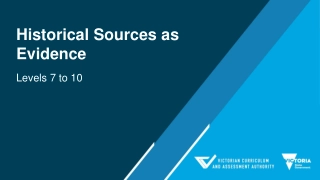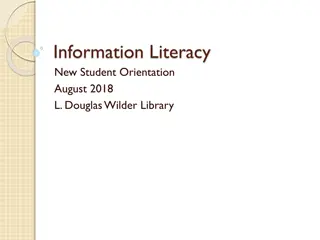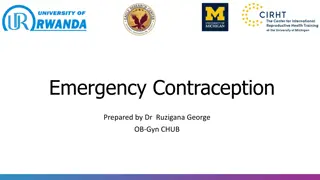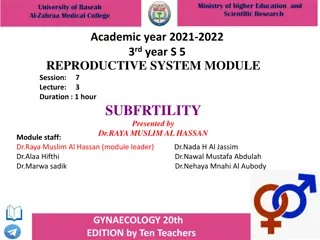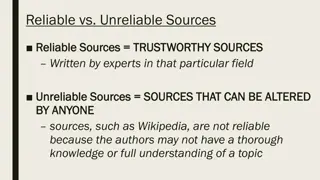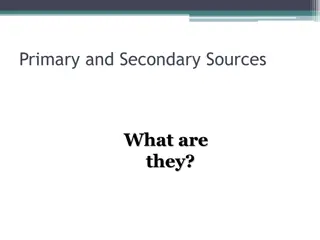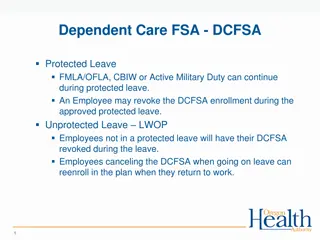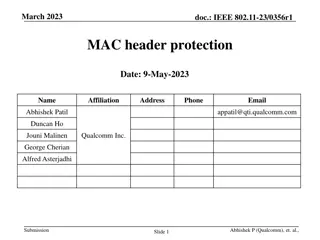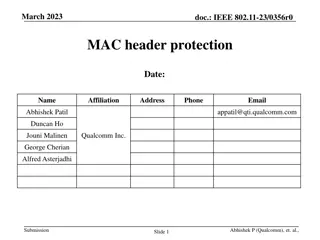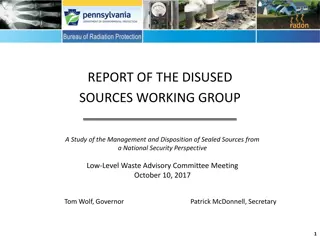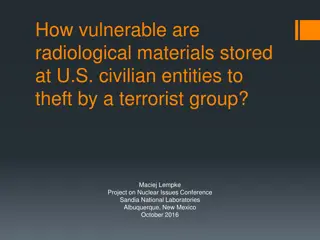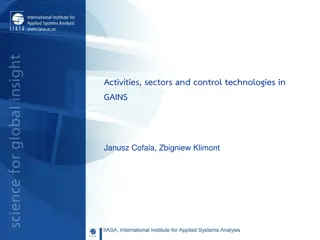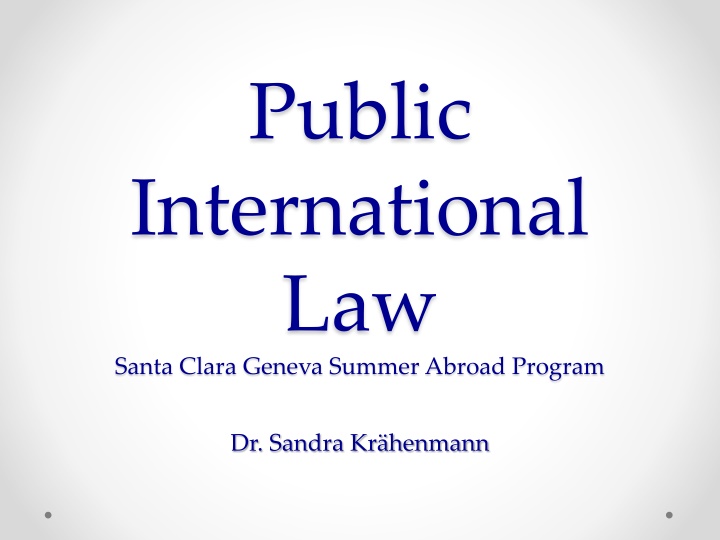
Understanding International Law Sources and Treaties
Explore the hierarchy of sources in international law, including conventions, general principles, and customary international law, along with the relationship between treaties and customary international law. Learn about the Vienna Convention on the Law of Treaties and its significance in establishing the default regime for written treaties between states.
Download Presentation

Please find below an Image/Link to download the presentation.
The content on the website is provided AS IS for your information and personal use only. It may not be sold, licensed, or shared on other websites without obtaining consent from the author. If you encounter any issues during the download, it is possible that the publisher has removed the file from their server.
You are allowed to download the files provided on this website for personal or commercial use, subject to the condition that they are used lawfully. All files are the property of their respective owners.
The content on the website is provided AS IS for your information and personal use only. It may not be sold, licensed, or shared on other websites without obtaining consent from the author.
E N D
Presentation Transcript
Public International Law Santa Clara Geneva Summer Abroad Program Dr. Sandra Kr henmann
Article 38 of the ICJ Statute 1. The Court, whose function is to decide in accordance with international law such disputes as are submitted to it, shall apply: a. international conventions, whether general or particular, establishing rules expressly recognised by the constituting states; b. international custom, as evidence of a general practice accepted as law; c. the general principles of law recognised by civilised nations; d. subject to the provisions of Article 59, judicial teachings and the teachings of the most highly qualified publicists of the various nations, as subsidiary means for the determination of rules of law.
Hierarchy of Sources ? Conventions General Principles CIL
Customary International Law ICJ, Continenal Shelf (Libya / Malta), 1985, pp.29-30. It is of course axiomatic that the material of customary international law is to be looked for primarily in the actual practice and opinio juris of States
Customary International Law Practice must be: Constant: repetition over time Uniform: similarity of the acts General reaction of other states Particularly Representative States Practice as Abstention
Customary International Law Opinio Juris Legal Conviction Contextual Assessment Relative Importance of Practice Opinio Juris
Relationship Treaties - CIL Treaty is a codification E.g. VCLT Treaties as Catalyzers or Triggers for CIL E.g. human rights treaties Treaties crystallize CIL E.g. Outer Space Treaty of 1967
Law of Treaties 1969 Vienna Convention on the Law of Treaties Default regime Written treaties between States - Bilateral and multilateral - no formalism -expression of consent to be bound VCLT was adopted in May 1969 and entered into force on 27 January 1980 VCLT applies if: - Date of conclusion of the treaty - Is after the date of entry into force of the VCLT for the States concerned Substantive parts of VCLT reflect CIL
Reservations Effects of a reservation
Invalidity of Treaties Relative Grounds of Invalidity Article 46 VCLT 1969: Provisions of internal law regarding competence to conclude treaties . Article 47 VCLT 1969: Specific restrictions on authority to express the consent of a State Article 48 VCLT 1969: Error . Article 49 VCLT 1969: Fraud . Article 50 VCLT 1969: Corruption of representative of State. Consequences Voidable Separability Acquiescence
Invalidity of Treaties Absolute Grounds of Invalidity Article 51 VCLT 1969 : Coercion of a representative of a State Article 52 VCLT 1969: Coercion of a State by the threat or use of force Article 53 VCLT 1969 : Treaties conflicting with a peremptory norm of general international law Consequences Void No Separability and acquiescence
Termination or Suspension Internal Grounds: Provided for in Treaty External Grounds: Exhaustive List in VCLT - Article 60: Material Breach - Article 61: Supervening Impossibility of Performance - Article 62: Fundamental Change of Circumstances - Article 64: Emergence of a New Peremptory Norm of IL

